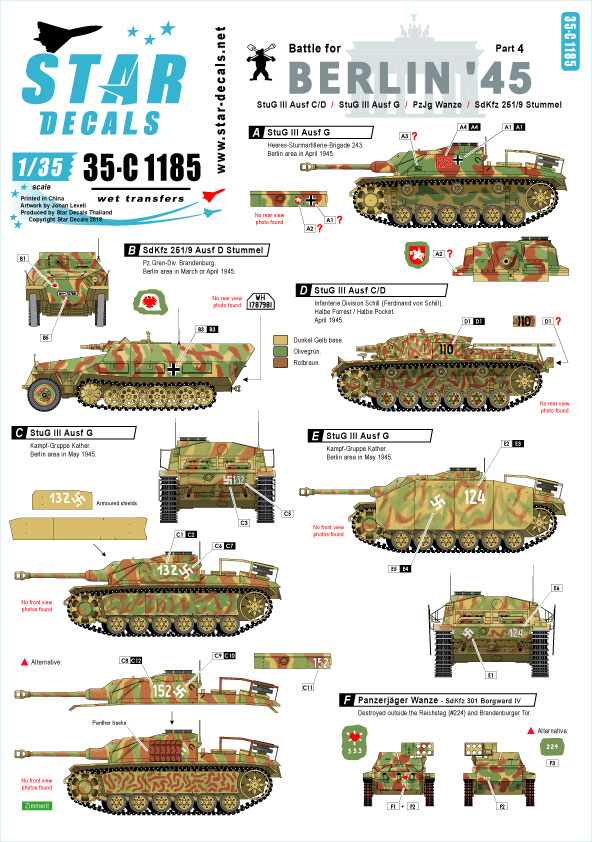
General Helmuth Weidling, the commander of the LVI Panzer Corps, looked rather like a professorial version of Erich von Stroheim, only with hair.
On the morning of 23 April, Weidling rang the Führer bunker to report. General Krebs replied ‘with conspicuous coldness’ and informed him that he had been condemned to death. Demonstrating a remarkable moral and physical courage, he turned up at the Führer bunker that afternoon. Hitler was clearly impressed, so much so that he decided that the man he had wanted to execute for cowardice was the man to command the defence of the Reich capital. It was, as Colonel Refior observed, a ‘tragi-comedy’ typical of the regime.
Weidling’s LVI Panzer Corps was considerably reduced. Only fragments remained of the 9th Parachute Division. The Muncheberg Panzer Division was reduced to remnants, and although the 20th Panzergrenadier Division was in better shape, its commander, Major General Scholz, had committed suicide shortly after entering Berlin. Only the Nordland and the 18th Panzergrenadier Division remained in a relatively battle-worthy condition. Weidling decided to hold back the 18th Panzergrenadier Division in reserve for counter-attack. The other formations were distributed around the different defence sectors to act as ‘Korsettstangen’ — ‘corset-stiffeners’.
Weidling found that he was supposed to defend Berlin from 1.5 million Soviet troops with around 45,000 Wehrmacht and SS troops, including his own corps, and just over 40,000 Volkssturm. Almost all the sixty tanks in the city came from his own formations. There was also supposed to be a Panzerjagd battalion equipped with Volkswagens, each of which was fitted with a rack for six anti-tank rockets, but nobody could find any trace of it. In the central government district, Brigadeführer Mohnke commanded over 2,000 men from his base in the Reich Chancellery.
The most immediate threat which Weidling faced on the afternoon of 23 April was the assault on the east and south-east of the city from the 5th Shock Army, the 8th Guards Army and the 1st Guards Tank Army. That night, armoured vehicles which were still battle-worthy were ordered back to Tempelhof aerodrome to refuel. There, amid an expanse of wrecked Luftwaffe fighter planes, mainly Focke-Wulfs, the armoured vehicles filled up at a depot by the huge administration building. They received an order to prepare to counter-attack south-eastwards towards Britz. They were reinforced with a few King Tiger tanks and some Nebelwerfer rocket launchers, but the main anti-tank weapon of this force was the ‘Stuka on foot’, a joke name for the panzerfaust.
German Units identified at the Battle of Berlin. April-May 1945.
56th Panzer Corps:
20th Panzer Grenadier Division
18th Panzer Grenadier Division
9th Fallschirmjager Division
Muncheberg Panzer Division
11th SS Panzer Grenadier Division ’Nordland’
15th SS Grenadier Division’Latvian No 1’ (SS Volunteers)
33rd SS Grenadier Division’Charlemagne’? (SS Volunteers)
Sturmgeshultz Brigades; 249, 243, Stug-Lehr-Brig.I, II, III.
Guard Regiment’Grossdeutschland’ (2 Battalions)
SS Chancellery Guard Battalion-this unit designated either Wachtbattalion (mot) ‘Leibstandarte Adolf Hitler’ or SS Fuhrer Begleit Kommando ‘Liebstandarte Adolf Hitler’
Some small units from the Naval School- ‘Gross Admiral Donitz’ Marine Battalion
Various Volksturm units. (92 battalions)
Total numbers.
24,000 regular troops.
60,000 Volksturm men.
6 plus Tiger II Tanks
Some French Tanks either Somua and/or H-35, One Russian T-35
Some Panthers and Pz IVH/J, with some Tiger I
StuG IIIG and StuH IIIG, with some JgPz IV
Estimate of German forces.
LVI Pz Kps as 13-15,000 men, the equivalent of two (2) divisions, Waffen-SS forces under Mohnke as half (1/2) a division, and the remaining miscellany of units as equating to some two (2) to three (3) divisions, a total of four (4) to five (5) divisions in all, with about 60,000 men and some fifty (50) to sixty (60) tanks.
1966 Estimate: 44,630 soldiers, 42,531 Volkssturm, 3,532 Hitlerjugend, RAD and Org Todt on the 23rd April.